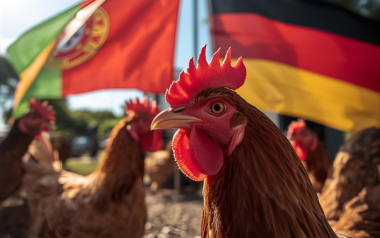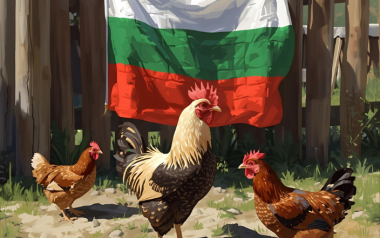Sources: Available upon request
12 Mar 2024
Newcastle disease in poultry
Newcastle disease is a highly contagious and often severe infection that exists worldwide and affects birds, including domestic poultry. It is caused by a virus of the paramyxovirus family.
Content available at:
Indonesia (Indonesian) Tiếng Việt (Vietnamese)
What is Newcastle disease?
Newcastle disease is a highly contagious and often severe infection that exists worldwide and affects birds, including domestic poultry. It is caused by a virus of the paramyxovirus family.
The disease appears in three forms: lentogenic or mild, mesogenic or moderate, and velogenic or very virulent, also called exotic Newcastle disease. Lentogenic strains are widespread but cause few outbreaks.
The usual form is a respiratory infection, but the predominant clinical signs may be depression, nervous manifestations, or diarrhea. Highly pathogenic Newcastle disease is listed in the Terrestrial Animal Health Code of the World Organization for Animal Health (OIE) and is notifiable to the OIE (OIE Terrestrial Animal Health Code).
Its symptoms are very similar to those of Avian Influenza and for this reason it is an officially controlled disease.
Where does the disease exist?
The disease has been detected worldwide, is currently controlled in Canada, the United States, and some Western European countries, and is still present in parts of Africa, Asia and South America. However, because wild birds sometimes carry the virus without being sick, outbreaks can occur wherever birds are kept.
How is it transmitted and spread?
- Newcastle disease is often transmitted by direct contact with sick or carrier birds.
- Infected birds can transmit the virus in their feces and contaminate the environment.
- Transmission can be by direct contact with feces and respiratory discharges or through contaminated food, water, equipment, and clothing.
- Newcastle disease viruses can survive for several weeks in the environment, especially in cold climates.
- The virus is present in all parts of the carcass of an infected bird.
What are the clinical signs?
- Respiratory signs: wheezing, coughing, sneezing and breathing noises.
- Nervous signs: trembling, wing and leg paralysis, twisted neck, circling, twitching and paralysis.
- Digestive signs: diarrhea.
- There may be partial or complete cessation of egg production. Eggs may have abnormalities of color, shape, or surface, and may have a watery albumen.
- Mortality is variable but may be as high as 100%.
How is the disease diagnosed?
- Newcastle disease can present a clinical picture very similar to that of avian influenza, so laboratory testing is required to confirm the diagnosis.
- The most used diagnostic method is virus isolation and subsequent characterization.
How to prevent or control the disease?
In most countries with commercial-scale poultry production, prophylactic vaccination is practiced. To demonstrate that a country is free of Newcastle disease, surveillance according to the guidelines of the OIE Terrestrial Animal Health Code is necessary.
Ultimately, poultry producers must establish effective biosecurity procedures to prevent the introduction of the disease.
In most countries, if the disease appears in a previously free area, an emergency culling policy is practiced. This includes:
- Strict isolation or quarantine of outbreaks.
- Decent destruction of all infected and exposed birds.
- Complete cleaning and disinfection of the premises.
- Proper disposal of carcasses.
- Pest control in flocks.
- Sanitary vacuum followed by 21 days without birds prior to restocking.
- Preventing contact with birds of unknown health status.
- Control of access to poultry farms.






































